After returning to Peñarol in late 2023 to begin his fourth stint in charge of the club, Diego Aguirre has largely enjoyed a positive run to date, which is certainly evident from their positioning on the Uruguayan Primera División Apertura table for 2024.
Currently 11 games into the campaign, Aguirre’s side sit top with nine wins, two draws and zero defeats in the league this year; their attack has undoubtedly played a significant role in that, with Peñarol scoring the second-most goals of any side in Uruguay’s top-flight (24) so far this term.
However, the focus of our tactical analysis and team-focused scout report will look at what Aguirre has his team doing out of possession. We’re going to provide some in-depth analysis of Peñarol’s defensive tactics, which have led them to concede just six goals — by far the fewest in the Primera División so far this term — whilst allowing the opposition to generate just 7.96 expected goals against them (xGA) — also the lowest in Uruguay’s top-flight.
So, what are Manyas Aurinegros doing so well without the ball? Let’s dive into their tactics and see.
Forwards pressing in the high block
This tactical analysis piece is going to be divided into three sections, the first of which focuses on how Peñarol’s forwards perform out-of-possession.
Aguirre’s side currently has the third-lowest PPDA (7.76) in the Uruguayan Primera División for the 2024 Apertura season, indicating quite a high pressing intensity relative to the other teams in their division.
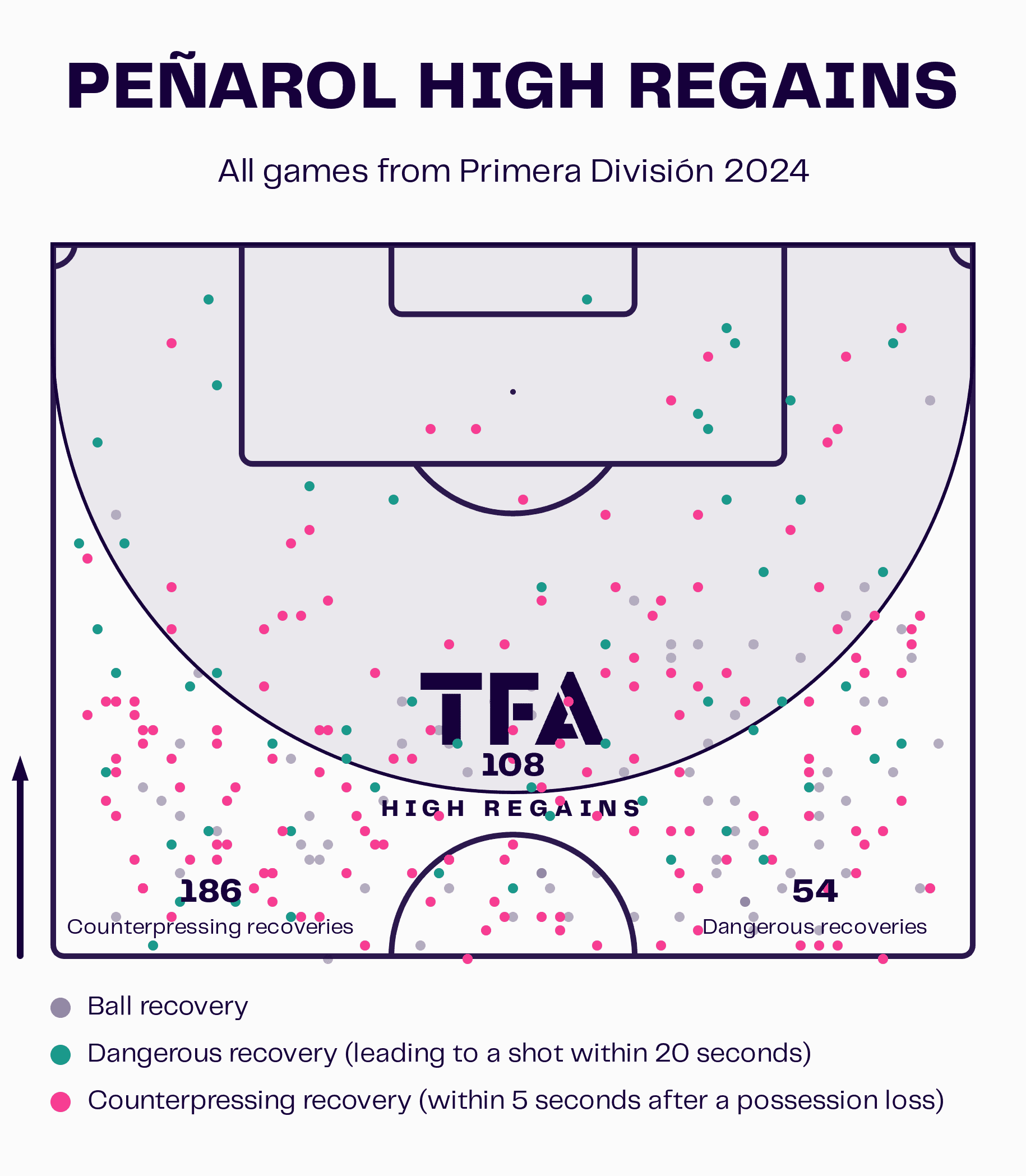
They’ve been able to force plenty of turnovers in dangerous areas, resulting in some inviting goalscoring opportunities for the Montevideo-based club and making their high press one of their most potent weapons in terms of chance creation.
The forwards in their 4-4-2 or 4-1-3-2 shape have, of course, played a significant part in their high press with the energy and defensive effort they bring to the table.
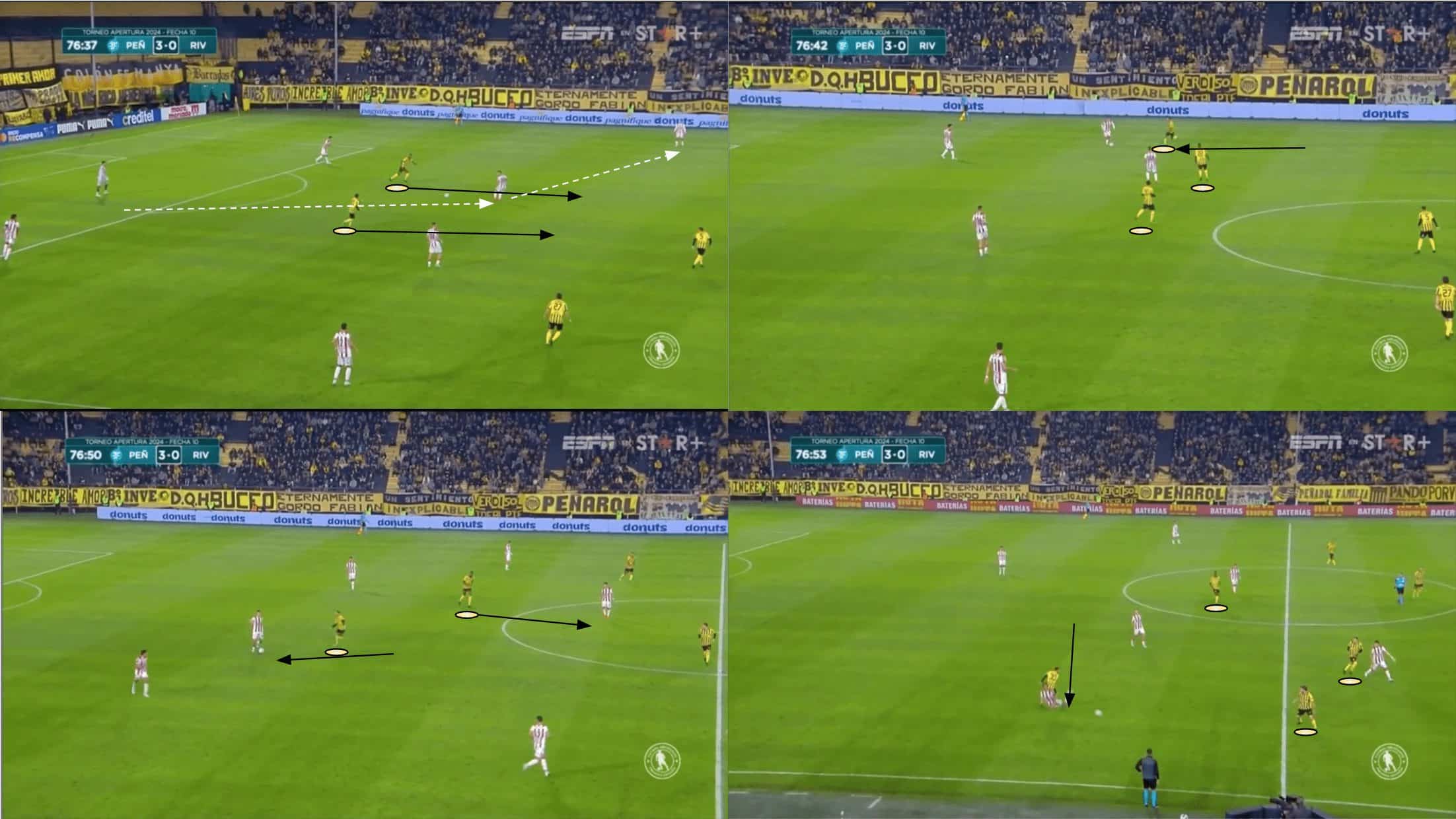
Above, we see an example of Matheus Babi and Ángel González, both of whom had just been subbed onto the pitch, working together to halt the opposition’s ball progression and force a turnover just inside the River Plate half of the pitch.
Having just been introduced from the bench, the two forwards immediately injected a resurgence of energy and focus, which makes it difficult for a player to maintain over 90 minutes, especially in such an intense pressing system. Hence, there was an immediate, noticeable impact on this duo’s introduction.
Initially, their positioning was off, and they allowed the opposition to break the first line of pressure, but their reaction was positive, immediately getting back behind the ball as the opposition went out wide.
When the ball returned to the right centre-back, González went to press him while Babi dropped onto the holding midfielder. This demonstrated excellent coordination in the press, with both forwards knowing exactly where they needed to be and where their teammate would be.
As River Plate are forced out wide due to central passing options being tightly marked, including the holding midfielder picked up by Babi, González can increase his pressing intensity on the ball carrier out wide and ultimately force the turnover.
This passage of play provides a clear example of the energy, organisation and teamwork that remains vital to Peñarol’s defensive success this term.
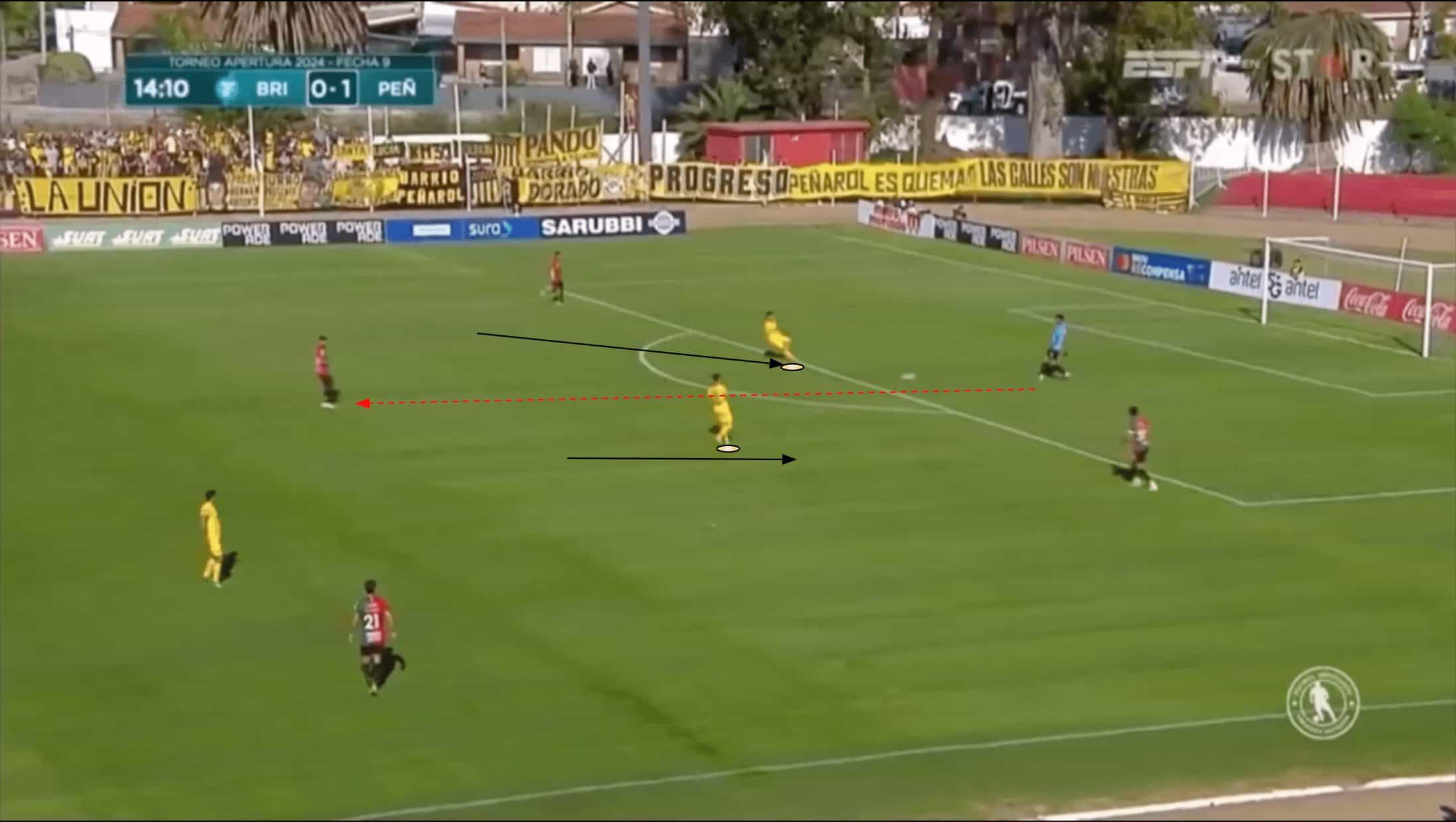
Here, as Boston River attempt to play out from the back, they bait Peñarol’s forwards to press and manage to break that first line of pressure with a line-splitting pass.
This shows another example of how the intensity of the Manyas Aurinegros forwards’ press can leave gaps behind for the opposition to exploit, just as we saw in figure 2. Again, though, while their first line is at times broken, that bit of penetration is rarely turned into anything too threatening by the opposition thanks to a combination of the forwards’ efforts in getting back, as we saw above, along with the midfielders’ intensity and organisation behind, as we’ll observe now.
Midfielders’ defensive roles
This brings us into our next section of analysis, where we’ll shine a light on the roles of Peñarol’s midfielders without the ball.
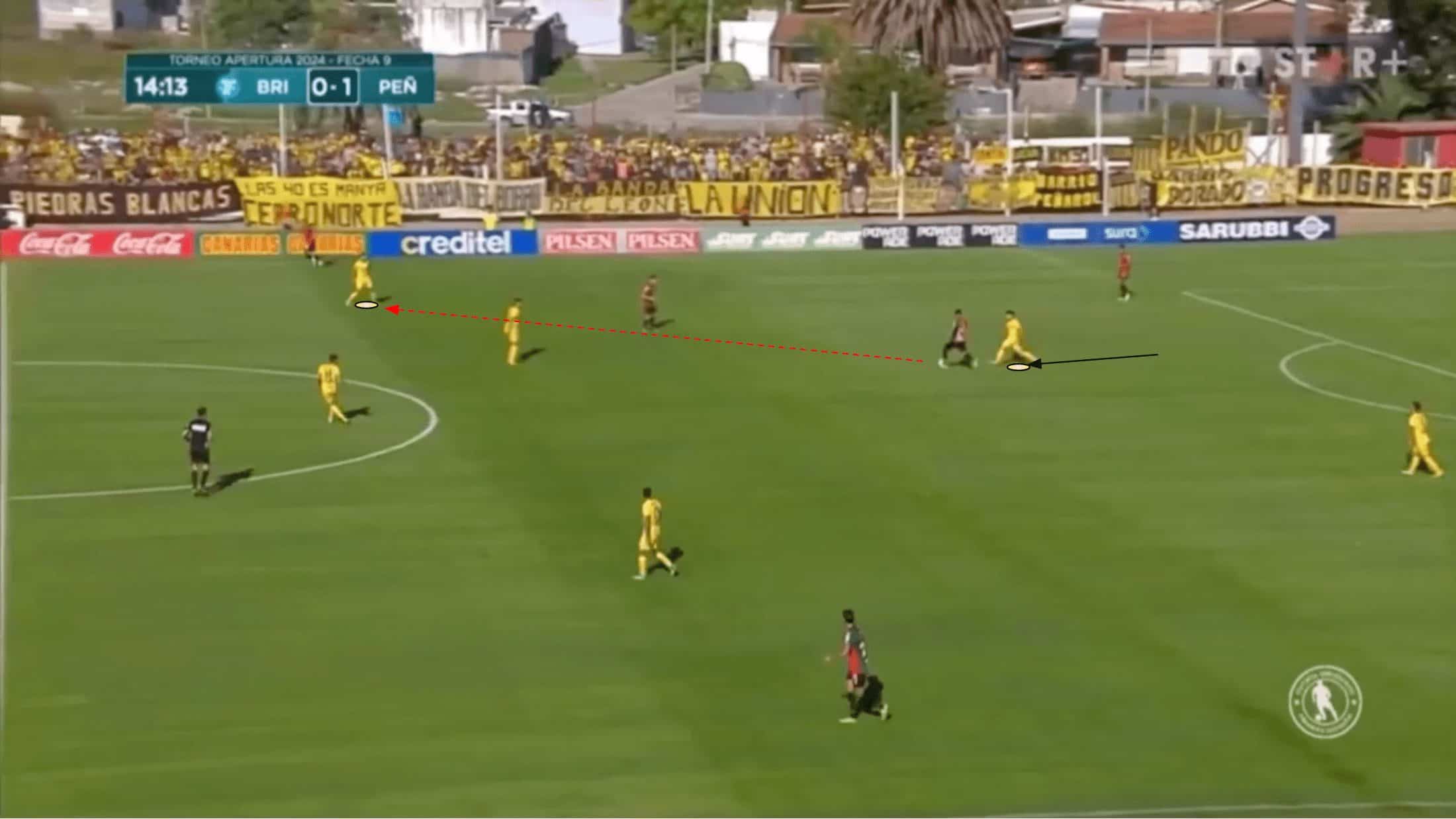
After the ball was played beyond Peñarol’s forwards in figure 3, the right striker diligently tracked the receiver and pressured him into a somewhat rushed decision as he attempted to continue his team’s progression up the pitch.
His next pass was intercepted by Manyas Aurinegros’ left-winger positioned between the ball carrier and the right wing, as seen above, which forced a high turnover in favour of Peñarol, giving them a great chance to go forward and hurt the opponent.
From this example, we can see how Peñarol’s midfielders and forwards must work in sync and help each other out. They must remain fairly compact, meaning that the midfielders need to push up and condense space behind the forwards as they jump to press to make sure there’s not a ton of space to exploit between the lines.
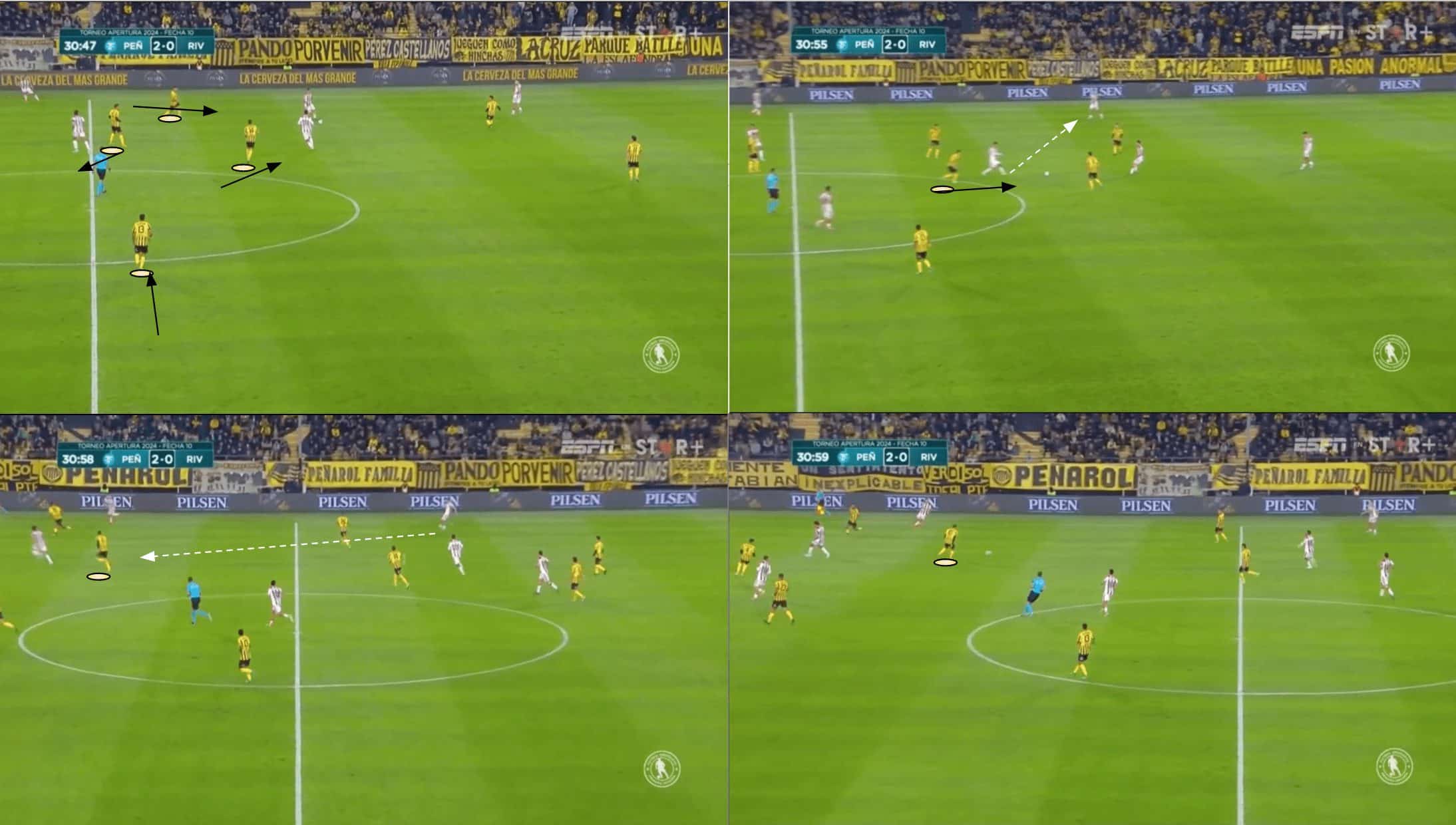
In the top-left image of figure 5, we can see a clear example of Peñarol’s midfield diamond which forms during out-of-possession phases. They do line up with something of a 4-4-2, but it morphs into more of a diamond as the wingers come narrow and central midfielders stagger, allowing one to press higher while the other must drop off to protect space behind the other three midfielders and in front of the backline.
In this case, we see how Peñarol’s attacking midfielder — in this case, Damián García — moves up to keep the pressure on the opposition’s deep midfielder to prevent them from turning and playing the ball forward from a decent deep playmaking position.
As the ball moves out wide to the right-back, they pick out a progressive pass towards an attacker, which is ultimately thwarted by captain Gastón Ramírez. He has positioned himself between the lines and is in a great place to perform his interception at this point.
Again, this passage of play displays the impressive levels of energy, organisation, and coordination that are constantly present within this side’s out-of-possession play and have proven vital to their success this term.
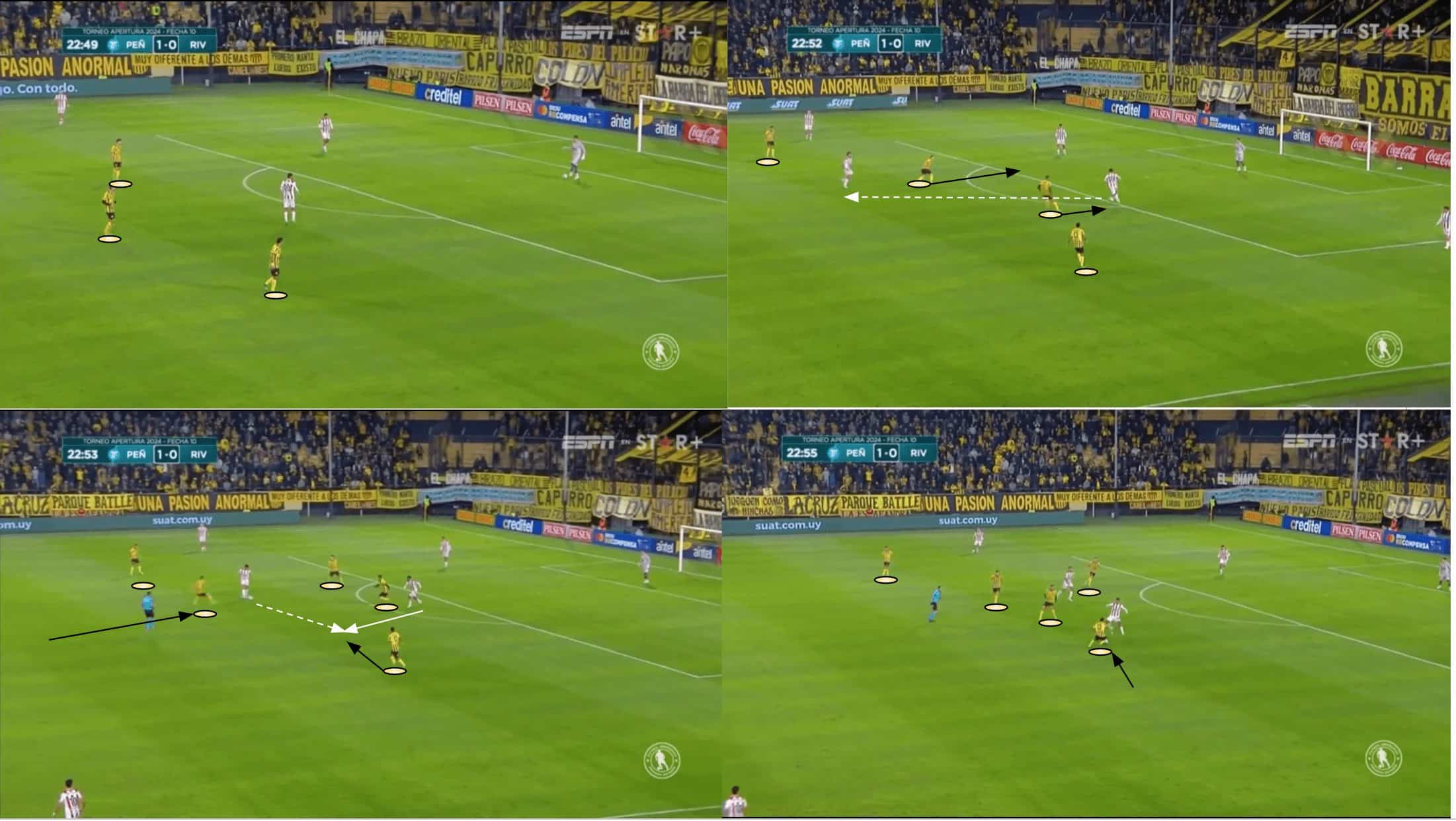
Often, when Peñarol go to press high, the three more advanced midfielders in the central diamond will stick closely to the forwards, and when the opposition are trying to build out from the back, this can easily lead to a turnover in an advanced position, as was the case here against River Plate when the close positioning and excellent coordination between Peñarol’s midfielders and attackers led to the right-winger, Eduardo Darias, regaining possession just on the edge of the opponent’s box, carrying it forward and forcing an own goal via a very threatening low cross.
As we see in the bottom-left image above, the attacking midfielder again zips onto the opposition’s holding midfielder as they receive on the edge of the area, preventing him from being able to turn and get his head up to pick out a good forward pass. This movement forces that player to move the ball to the left centre-back, creating the opening for Darias to engage the ball carrier and regain possession for Manyas Aurinegros.
This level of teamwork in terms of movement and compactness is a major part of what has made Peñarol so difficult to break down in 2024 thus far.
The high backline
Our final section of this analysis focuses on Manyas Aurinegros’ high backline. To reiterate, teamwork and organisation are crucial for the success of Peñarol’s intense pressing. As the forwards advance, so to must the midfielders which means those occupying positions in the back-four must also push up and condense the space between themselves and the deepest midfielder who’ll drop off to try and plug that gap between the last and middle lines as well.
This can make recovery pace and ability in 1v1 duels critical for those in Peñarol’s backline, with these skills always being quite important for defenders but never more so than when you are at greater risk of being isolated against an opposition attacker or at risk of having to chase an attacker being played in behind.
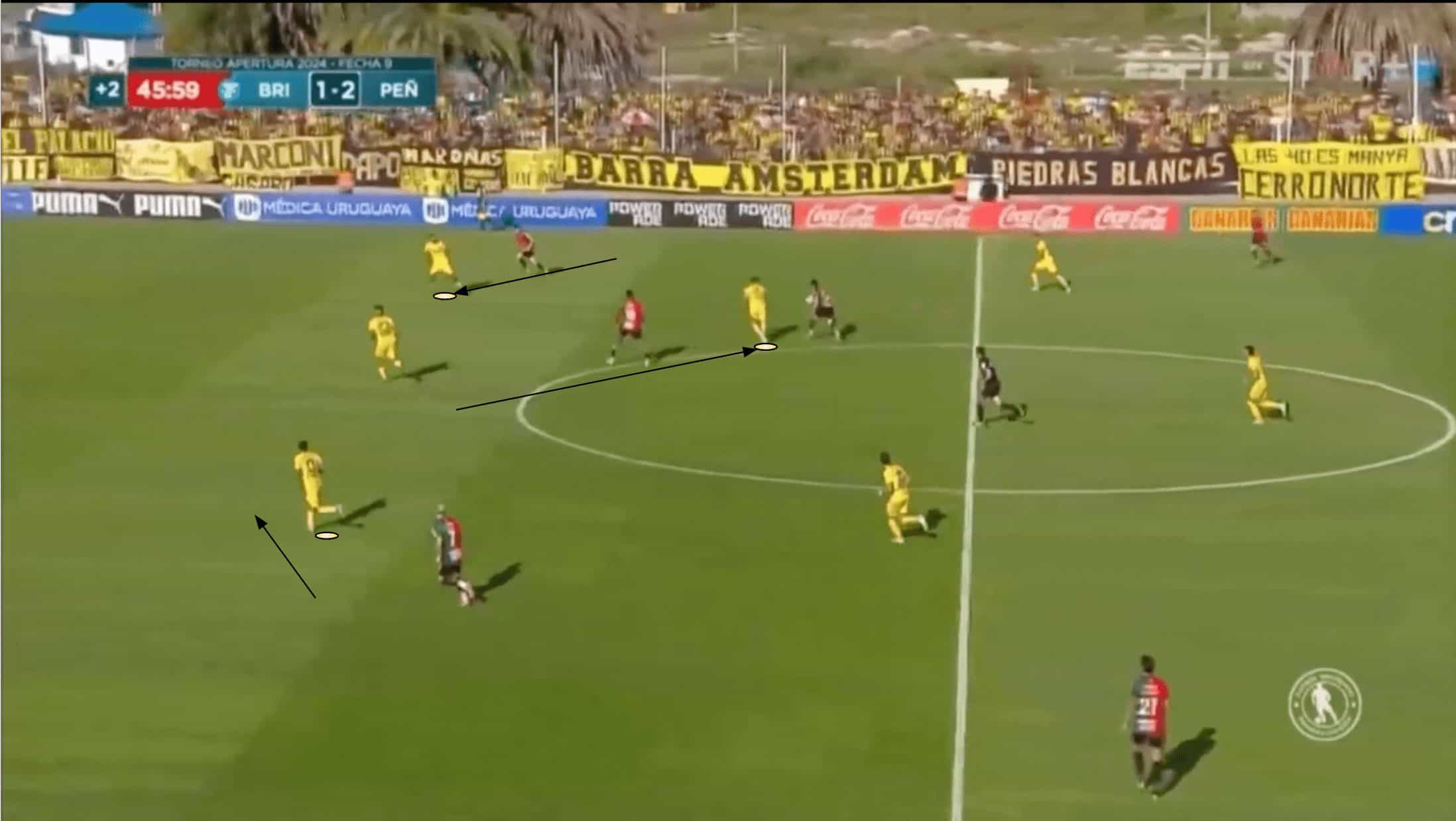
We saw earlier in this analysis how Peñarol’s front six have been highly successful at preventing the opponent from progressing through them so far this year, resulting in plenty of high turnovers for Manyas Aurinegros to capitalise on.
That’s true, but there have, of course, been occasions when the forward and midfield lines are breached, meaning the backline is called into play. We can see an example of one such case in figure 7 above where Guzmán Rodríguez has sprung out of the backline to close down an opposition attacker receiving the ball to feet in between the lines.
In addition to Rodríguez’s own 1v1 defensive ability, which is obviously critical here, it’s also important he receives cover, which comes in the form of Peñarol’s full-backs, both of whom tuck in behind to ensure the remaining centre-back — Javier Méndez — isn’t left on his own.
This coordination and teamwork prove especially important when the opposition make their way beyond Rodríguez and start galloping towards Peñarol’s goal; had the full-backs neglected their duties and not tucked in, this would’ve been a far more threatening situation that could’ve led to an equaliser on the stroke of half-time.
Instead, Peñarol survived this attack and managed to score a third to put the game beyond all doubt at the beginning of the second half—those in the backline can be pleased their defensive efforts paid off.
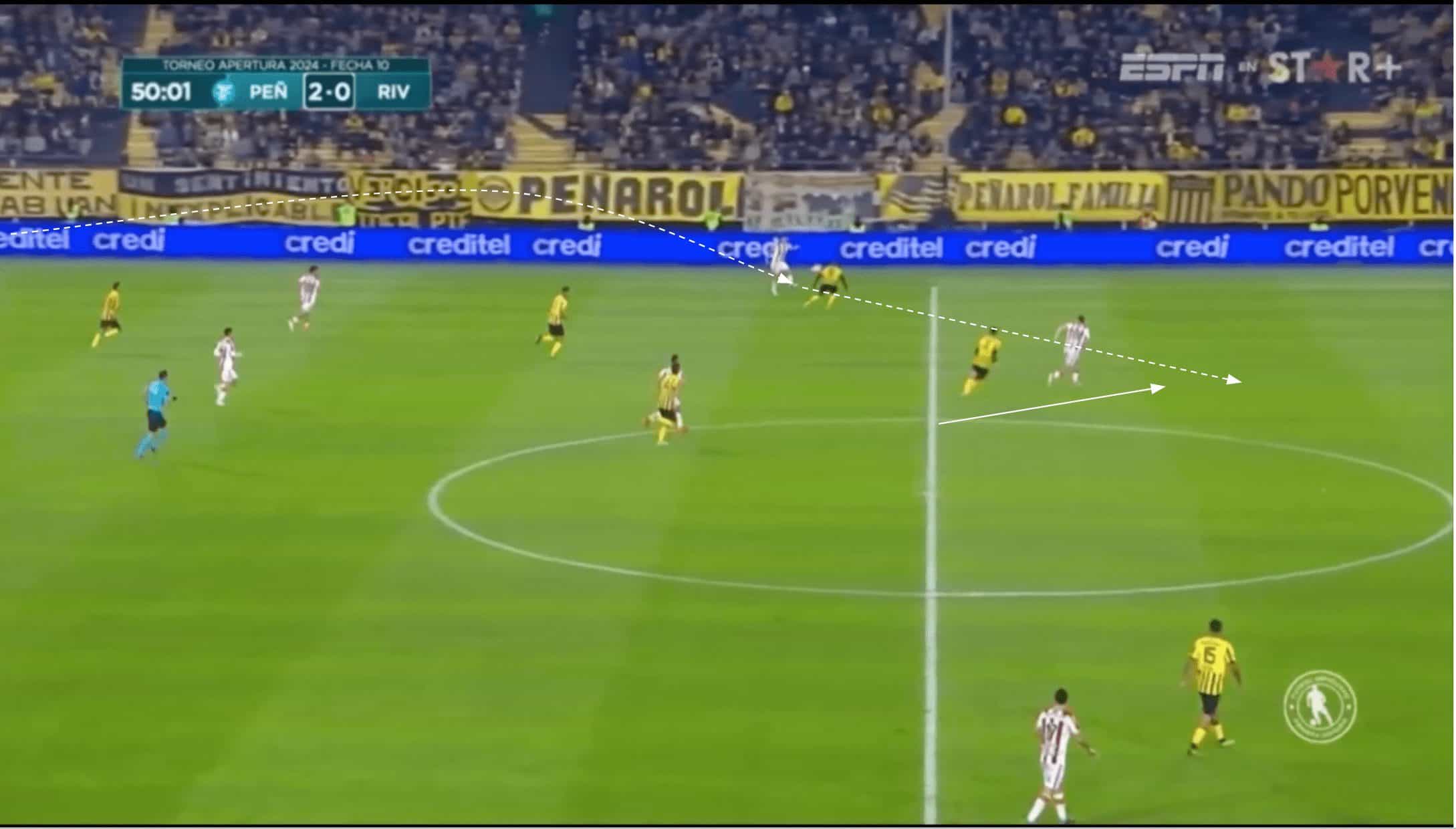
Coordination in positioning and movement is always critical to Peñarol’s defensive game, and we see an example of how a lack of coordination can be costly in figure 8.
Here, the opposition have played the ball forward to a winger who’s able to spot a runner moving in behind the high backline of Manyas Aurinegros and play a through ball to that attacker.
The nearest defender to that player is trying to pull an offside trap, but the ball-far full-back is playing him onside, allowing that player to carry forward and generate a really good goalscoring chance.
With Peñarol pressing so high, opponents will go into games aiming to exploit the space behind their backline. As a result, coordination and teamwork is always a must when it comes to defending that space, especially with a risky offside trap.
This particular instance was not punished, but you can see this being a cause of goals against Aguirre’s side in the future. However, if the trade-off for that weakness is the quality of pressing, frequent high turnovers, and general defensive solidity, this system has brought Manyas Aurinegros so far this term; that’s probably a decent place to be. Still, they must do their best to consistently support one another on the pitch and deny the opponent any opportunity to exploit their high line, which greater coordination, focus and communication in the back four will do.
Conclusion
To conclude this scout report, it’s clear that Peñarol have been so solid at the back this term in large part thanks to their intense pressing system, which relies heavily on high levels of coordination and organisation between teammates.
Should they maintain the necessary level in those areas, along with energy, effort and focus, throughout the campaign, 2024 could well go down as a very successful year for Manyas Aurinegros and Diego Aguirre.





Comments